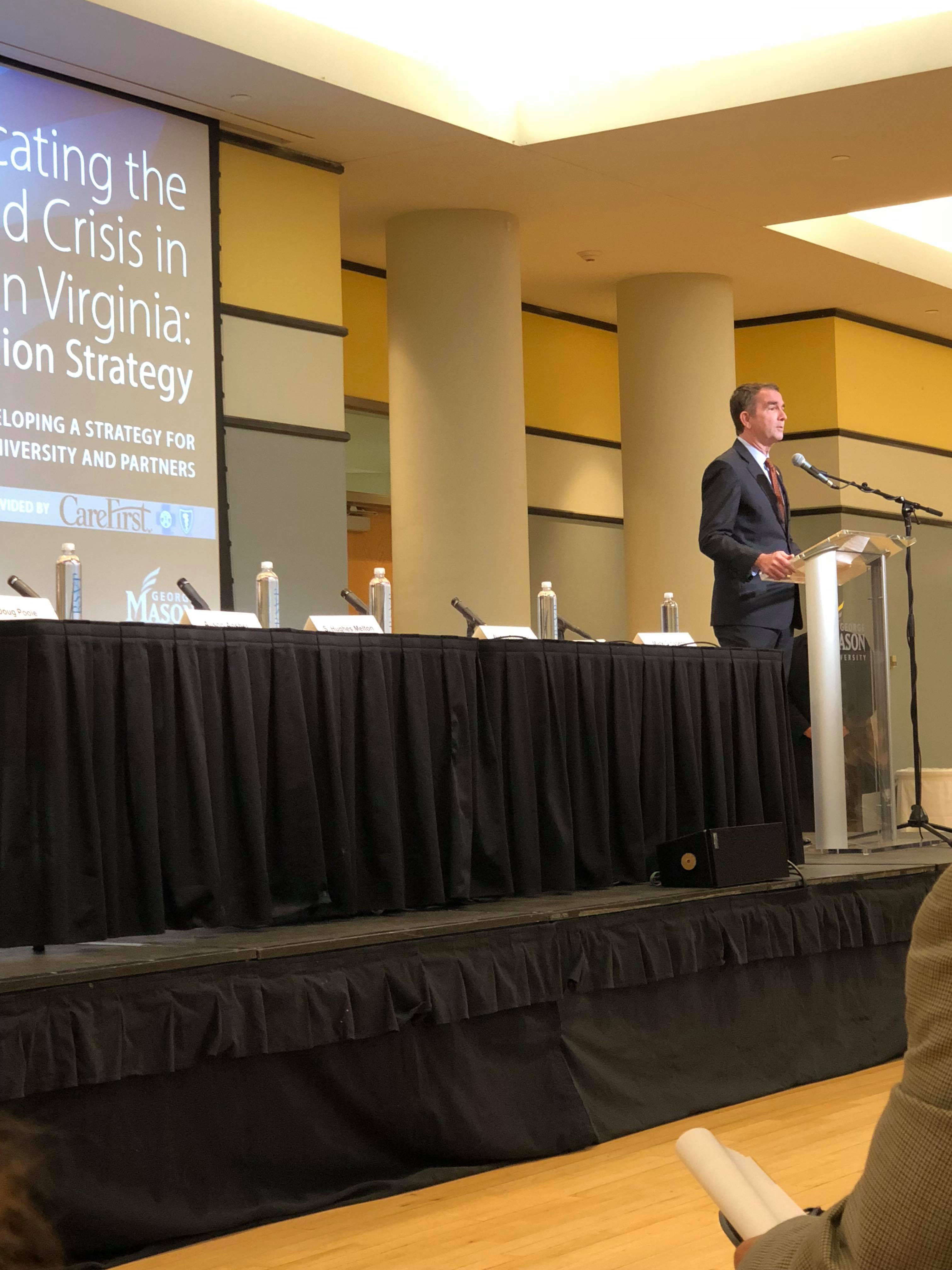On April 19, a slew of researchers, scholars, and politicians visited George Mason University to propose solutions toward ending the opioid crisis in Northern Virginia.
By: Jackie Reed
FAIRFAX, VA – On April 19, a slew of researchers, scholars, and politicians visited George Mason University to propose solutions toward ending the opioid crisis in Northern Virginia. At 8:15 a.m., panelists, researchers, and politicians gathered in Dewberry Hall to begin the all-day symposium.
Opening the dialogue was William Hazel, senior advisor for strategic initiatives and policy at Mason. As former Virginia Secretary for Health and Human Resources, Hazel is greatly familiar with initiatives that fight against the opioid crisis. First speaker after Hazel’s introduction was David Wu, the university’s provost and executive vice president. Wu emphasized Mason’s commitment to developing “trans-disciplinary research” – starting at the collegiate level can have an impact on public health issues today.
After Wu’s introduction, governor of Virginia Ralph Northam presented his call to action to eradicate such an epidemic, by defining it as the “largest challenge” Virginia faces today. He stated, “we lost 1,227 – 1,227 Virginians to opioid overdoses in 2017. And I would like to tell you that the numbers are going down but they are not.”
As a governor and a physician, Northam explains how attainable narcotics are, whether prescribed or sold otherwise. “Access to heroin is not difficult in this day and age, and as you know, that heroin is now often laced with either fentanyl or par fentanyl, which is about 100 times as potent than fentanyl,” Northam said. Once consumers have access to these drugs, even after one use, they can become addicted.
According to the National Institute on Drug Abuse (NIDA), “roughly 21 to 29 percent of patients prescribed opioids for chronic pain misuse them.” Wilson Compton, deputy director of NIDA, considers the market increase of drug usage and exposure as “an extraordinary situation.” Compton noted, “Dr. Hazel and the governor reminded us that this did start with over-prescribing. That was the spark that started this fire – through a really well-intentioned desire – treat pain more effectively. That is our goal. We need to make sure that we do a good job of taking care of patients with pain.” Because of the easy access and prone nature to drug addiction, physicians and pharmacists have an integral role in educating patients and preventing misuse of such prescriptions.
Prevention, acute management, and general management are the main takeaways from the symposium. Programs hoping to eradicate the epidemic require innovation, collaboration among several perspectives, and dissemination of backed and current statistics.
Feature Photo By (Sasha Toophanie/WGMU).
